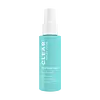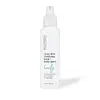What's inside
What's inside
 Key Ingredients
Key Ingredients

 Benefits
Benefits

 Concerns
Concerns

 Ingredients Side-by-side
Ingredients Side-by-side

Water
Skin ConditioningDipropylene Glycol
HumectantButylene Glycol
HumectantPolysorbate 20
EmulsifyingPentylene Glycol
Skin ConditioningSalicylic Acid
MaskingPanthenol
Skin ConditioningSodium Hyaluronate
HumectantDipotassium Glycyrrhizate
HumectantGlycyrrhiza Glabra Root Extract
BleachingBerberis Vulgaris Root Extract
AntimicrobialLauric Acid
CleansingAllantoin
Skin ConditioningGlycerin
HumectantPEG/PPG-17/6 Copolymer
SolventMethyl Gluceth-20
HumectantGlycereth-26
HumectantSodium Hydroxide
BufferingSodium Metabisulfite
AntioxidantDisodium EDTA
Potassium Sorbate
PreservativeWater, Dipropylene Glycol, Butylene Glycol, Polysorbate 20, Pentylene Glycol, Salicylic Acid, Panthenol, Sodium Hyaluronate, Dipotassium Glycyrrhizate, Glycyrrhiza Glabra Root Extract, Berberis Vulgaris Root Extract, Lauric Acid, Allantoin, Glycerin, PEG/PPG-17/6 Copolymer, Methyl Gluceth-20, Glycereth-26, Sodium Hydroxide, Sodium Metabisulfite, Disodium EDTA, Potassium Sorbate
Water
Skin ConditioningAlcohol
AntimicrobialGlycolic Acid
BufferingIsopentyldiol
HumectantPolysorbate 20
EmulsifyingPentylene Glycol
Skin ConditioningPropanediol
SolventNiacinamide
SmoothingPhenoxyethanol
PreservativeSalix Nigra Bark Extract
Skin ProtectingSalicylic Acid
MaskingGlycerin
HumectantAzelaic Acid
BufferingAmmonium Hydroxide
BufferingBisabolol
MaskingEucalyptus Globulus Leaf Oil
PerfumingMentha Piperita Oil
MaskingBHT
AntioxidantButylene Glycol
HumectantAvena Sativa Kernel Extract
AbrasiveUndecanoic Acid
AntiseborrhoeicMentha Arvensis Leaf Oil
MaskingAnthemis Nobilis Flower Extract
MaskingAlpha-Arbutin
AntioxidantGlutathione
Kojic Acid
AntioxidantMenthol
MaskingPotassium Sorbate
PreservativePhospholipids
Skin ConditioningRicinus Communis Seed Oil
MaskingTocopheryl Acetate
AntioxidantAscorbyl Palmitate
AntioxidantRetinyl Palmitate
Skin ConditioningWater, Alcohol, Glycolic Acid, Isopentyldiol, Polysorbate 20, Pentylene Glycol, Propanediol, Niacinamide, Phenoxyethanol, Salix Nigra Bark Extract, Salicylic Acid, Glycerin, Azelaic Acid, Ammonium Hydroxide, Bisabolol, Eucalyptus Globulus Leaf Oil, Mentha Piperita Oil, BHT, Butylene Glycol, Avena Sativa Kernel Extract, Undecanoic Acid, Mentha Arvensis Leaf Oil, Anthemis Nobilis Flower Extract, Alpha-Arbutin, Glutathione, Kojic Acid, Menthol, Potassium Sorbate, Phospholipids, Ricinus Communis Seed Oil, Tocopheryl Acetate, Ascorbyl Palmitate, Retinyl Palmitate
 Reviews
Reviews

Ingredients Explained
These ingredients are found in both products.
Ingredients higher up in an ingredient list are typically present in a larger amount.
Butylene Glycol (or BG) is used within cosmetic products for a few different reasons:
Overall, Butylene Glycol is a safe and well-rounded ingredient that works well with other ingredients.
Though this ingredient works well with most skin types, some people with sensitive skin may experience a reaction such as allergic rashes, closed comedones, or itchiness.
Learn more about Butylene GlycolGlycerin is already naturally found in your skin. It helps moisturize and protect your skin.
A study from 2016 found glycerin to be more effective as a humectant than AHAs and hyaluronic acid.
As a humectant, it helps the skin stay hydrated by pulling moisture to your skin. The low molecular weight of glycerin allows it to pull moisture into the deeper layers of your skin.
Hydrated skin improves your skin barrier; Your skin barrier helps protect against irritants and bacteria.
Glycerin has also been found to have antimicrobial and antiviral properties. Due to these properties, glycerin is often used in wound and burn treatments.
In cosmetics, glycerin is usually derived from plants such as soybean or palm. However, it can also be sourced from animals, such as tallow or animal fat.
This ingredient is organic, colorless, odorless, and non-toxic.
Glycerin is the name for this ingredient in American English. British English uses Glycerol/Glycerine.
Learn more about GlycerinPentylene glycol is typically used within a product to thicken it. It also adds a smooth, soft, and moisturizing feel to the product. It is naturally found in plants such as sugar beets.
The hydrophilic trait of Pentylene Glycol makes it a humectant. As a humectant, Pentylene Glycol helps draw moisture from the air to your skin. This can help keep your skin hydrated.
This property also makes Pentylene Glycol a great texture enhancer. It can also help thicken or stabilize a product.
Pentylene Glycol also acts as a mild preservative and helps to keep a product microbe-free.
Some people may experience mild eye and skin irritation from Pentylene Glycol. We always recommend speaking with a professional about using this ingredient in your routine.
Pentylene Glycol has a low molecular weight and is part of the 1,2-glycol family.
Learn more about Pentylene GlycolPolysorbate 20 is made by combining ethoxylation of sorbitan, ethylene oxide, and lauric acid. It is a mild cleansing agent, surfactant, and emulsifier.
As a surfactant, it helps collect dirt and oils for washing. Emulsifiers prevent oils and water from separating.
Polysorbate 20 also adds scent to a product. Since it is made using sorbitol, it has a sweet scent. Sorbitol can also be found in fruits such as apples and peaches.
The lauric acid used to create Polysorbate 20 is often derived from coconuts.
Polysorbate 20 may not be fungal acne safe.
Learn more about Polysorbate 20Potassium Sorbate is a preservative used to prevent yeast and mold in products. It is commonly found in both cosmetic and food products.
This ingredient comes from potassium salt derived from sorbic acid. Sorbic acid is a natural antibiotic and effective against fungus.
Both potassium sorbate and sorbic acid can be found in baked goods, cheeses, dried meats, dried fruit, ice cream, pickles, wine, yogurt, and more.
You'll often find this ingredient used with other preservatives.
Learn more about Potassium SorbateSalicylic Acid (also known as beta hydroxy acid or BHA) is a well-known ingredient for treating skin that struggles with acne and clogged pores. It exfoliates both the skin's surface and deep within the pores to help clear out buildup, control oil, and reduce inflammation.
Unlike AHAs (alpha hydroxy acids), salicylic acid is oil-soluble. This allows it to penetrate into pores which makes it especially effective for treating blackheads and preventing future breakouts.
Salicylic acid is also known for its soothing properties. It has a similar structure to aspirin and can calm inflamed or irritated skin, making it a good option for acne-prone skin that is also sensitive.
Concentrations of 0.5-2% are recognized by the U.S. FDA as an over-the-counter topical acne product.
It can cause irritation and/or dryness if one's skin already has a compromised moisture barrier, so it's best to focus on repairing that before introducing this ingredient into your routine.
While salicylic acid does not increase sun sensitivity, it’s still important to wear sunscreen daily to protect your skin.
If you are looking for the ingredient called BHA or Butylated Hydroxyanisole, click here.
Learn more about Salicylic AcidWater. It's the most common cosmetic ingredient of all. You'll usually see it at the top of ingredient lists, meaning that it makes up the largest part of the product.
So why is it so popular? Water most often acts as a solvent - this means that it helps dissolve other ingredients into the formulation.
You'll also recognize water as that liquid we all need to stay alive. If you see this, drink a glass of water. Stay hydrated!
Learn more about Water